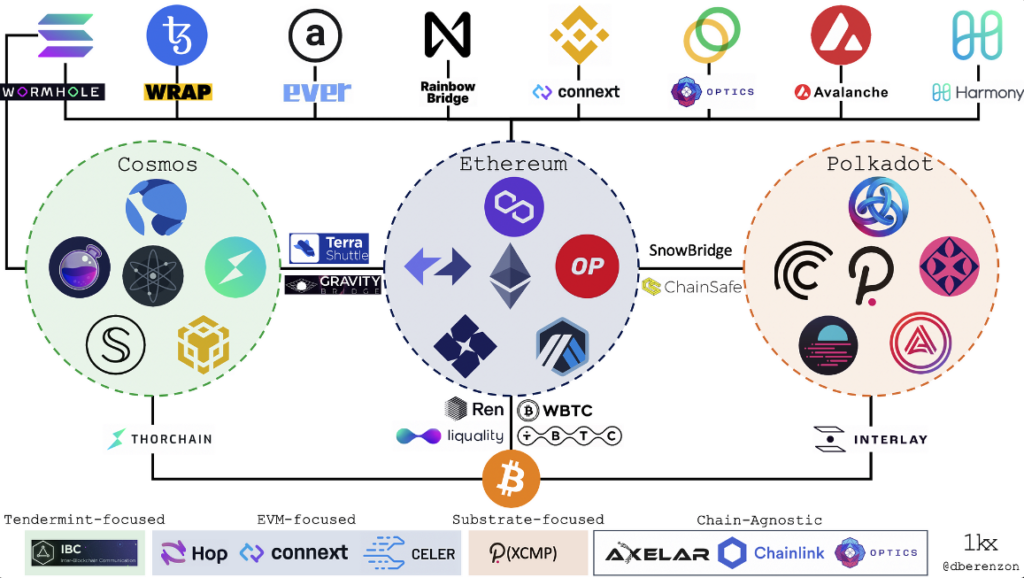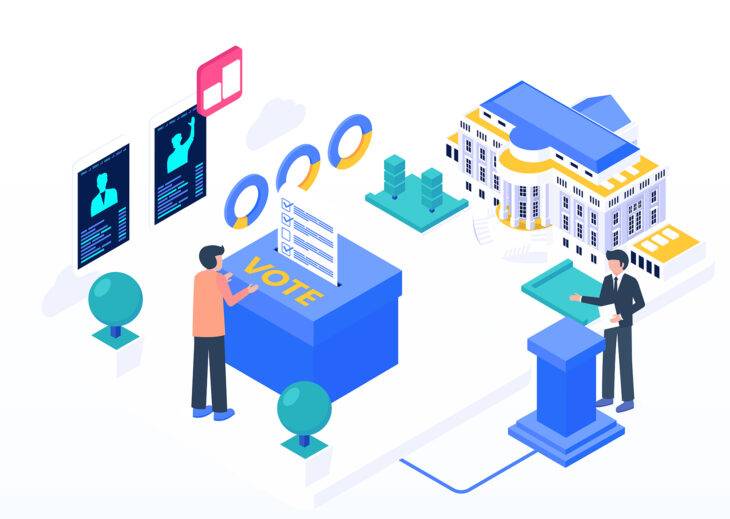Introduction
The concept of Web3 represents a transformative evolution in the digital landscape, promising a decentralized framework that shifts control and ownership back to the users. Unlike the centralized systems of Web2, Web3 aims to create an internet where users have greater autonomy over their data and digital assets. This essay delves into the pivotal challenges of interoperability, the centralization paradox, and the clarity of Web3’s value proposition, which are critical to understanding and advancing Web3’s integration into mainstream technology and society.
Understanding these challenges is essential for stakeholders, including developers, businesses, and policymakers, who are working towards a more decentralized future. By addressing these issues, we can unlock the full potential of Web3 and ensure it provides tangible benefits to all users. This essay will explore these key challenges in detail, offering insights and potential solutions to foster a more decentralized and user-empowered digital ecosystem.
Section 1: Interoperability in Web3
Definition and Importance
Interoperability in Web3 is crucial for seamless interaction between different blockchain networks. It allows them to exchange data and transact without barriers, creating a cohesive and efficient digital ecosystem. This capability enables innovations and assets to move freely between various blockchain environments. Examples include Ocean Protocol and NuCypher in healthcare, which improve service quality and patient data control, and gaming projects like Axie Infinity and Enjin, which enhance asset portability across platforms.
The future of Web3 interoperability involves overcoming current limitations such as scalability and security concerns. Solutions like cross-chain bridges and protocols like Cosmos’ IBC are being developed for better communication and asset transfer between blockchains. These advancements are critical for the widespread adoption and functionality of Web3, enabling a more integrated and user-friendly blockchain environment.
Current State and Challenges
Web3 interoperability currently faces challenges due to the fragmentation of blockchain networks, each with its own protocols and standards. This variety results in a segregated ecosystem where transferring assets or data across platforms like Ethereum, Bitcoin, and Solana becomes difficult and often requires third-party services. This fragmentation not only complicates transactions, but also presents security risks and hinders user experience, as users must navigate numerous wallets and understand different network fees and transaction times.
Technological constraints further intensify these challenges. The dependency on bridges and layer-2 solutions presents potential vulnerabilities. For example, cross-chain bridges, which are crucial for asset transfers between blockchains, have often been targets of security breaches, leading to significant financial losses. These problems highlight the need for more standardized, secure interoperability solutions to improve user-friendliness and ensure strong security. These aspects are crucial for the broader adoption and progression of blockchain technologies.
Technological Solutions
Technological solutions including cross-chain bridges, sidechains, and layer-2 solutions play a vital role in improving blockchain interoperability and scalability. Cross-chain bridges like the Synapse Bridge enable asset transfers between different blockchains such as Ethereum, Binance Smart Chain, and Avalanche. They do so through mechanisms that ensure secure and efficient transfers.
Sidechains, like Polygon, handle transactions from the main blockchain on a secondary chain. This reduces congestion and improves transaction speeds, all while maintaining security through mechanisms like Proof of Stake.
Layer-2 solutions, such as Optimism and Arbitrum, use rollups technology to process transactions off the main Ethereum blockchain. This significantly increases transaction throughput and reduces fees.
Additionally, the Inter-Blockchain Communication (IBC) protocol by Cosmos allows for seamless interactions between different blockchain networks. It enables the transfer of tokens and data across independent blockchains.
These innovations are essential for creating a more integrated and functional digital ecosystem. They showcase the transformative potential of Web3 technologies.

Case Studies and Benefits
The practical examples of Cosmos’ Inter-Blockchain Communication (IBC) and Polkadot’s relay chain illustrate the significant benefits of interoperability in enhancing the utility and adoption of blockchain technology.
Cosmos IBC
The IBC protocol of Cosmos is an exemplary success in blockchain interoperability. It enables smooth transfer of data and assets across different blockchains within the Cosmos network, effectively creating an “Internet of Blockchains”. This is made possible by a standardized protocol that allows communication between independent blockchains. It facilitates secure and efficient transfer of tokens and other data. The Cosmos Hub, for example, serves as a central ledger connecting various blockchains (referred to as zones). These maintain their independence but can communicate with each other through IBC. This setup contributes to a more interconnected network, where developers can create applications that function across multiple blockchains, thereby improving user accessibility and experience.
Polkadot’s Relay Chain
In a similar fashion, Polkadot employs an architecture centered around its relay chain. This chain coordinates the system and ensures interoperability among the parachains linked to it. Each parachain can have its own tokens, governance, and operate with different consensus mechanisms, all while benefiting from the shared security and interoperability offered by the relay chain. This structure allows various blockchains to interact and share information securely and scalably. For instance, through Polkadot’s Cross-Consensus Messaging (XCM), parachains can communicate and transact with each other without needing a central authority. This enhances the scalability and functionality of the network.
Section 2: The Centralization Paradox
The Paradox Explained
The centralization paradox in Web3 refers to the tension between the ideal of decentralization and the practical need for some centralized mechanisms. Despite cryptocurrencies’ decentralized nature, many users still rely on centralized exchanges, such as Coinbase, for trading. These exchanges control user funds and data, posing potential security risks and points of failure.
Similarly, power within blockchain governance often resides with a select few. For instance, in EOS, 21 block producers make critical decisions, possibly overshadowing the broader community’s interests.
Web3 infrastructure also displays centralization tendencies, with many decentralized applications (DApps) depending on centralized cloud services like Amazon Web Services (AWS) for hosting. This reliance introduces risks, as AWS outages can affect service availability and security, contradicting the decentralized ethos by concentrating control and creating points of failure.
To resolve this paradox, it is vital to develop decentralized governance models like decentralized autonomous organizations (DAOs) and technological solutions such as decentralized exchanges (DEXs). These innovative solutions aim to distribute control more evenly and decrease dependence on centralized entities, edging closer to a genuinely decentralized and user-centric Web3 environment.
Examples and Impacts
Decentralized applications (DApps) and platforms often depend on centralized infrastructure, including exchanges and cloud services. This reliance introduces control issues and vulnerabilities. Centralized exchanges such as Binance and Coinbase hold significant user assets, creating potential failure points as demonstrated by previous security breaches. Likewise, many DApps use centralized services such as Amazon Web Services for hosting. Outages in these services have led to disabled access to DApps, underlining the risks of single points of failure.
The issue of centralization is also evident in governance, especially in decentralized autonomous organizations (DAOs). Here, decision-making can be controlled by a minority of stakeholders with significant holdings. For instance, in MakerDAO, a small group of MKR token holders can disproportionately influence decisions, despite the organization’s decentralized governance structure. This raises questions about the actual extent of decentralization.
Development of decentralized exchanges (DEXs) like Uniswap and decentralized cloud storage solutions such as IPFS and Filecoin is crucial to reducing these centralized dependencies. These technologies aim to decrease reliance on centralized entities, increase system resilience, and align more closely with Web3 principles. This promotes greater security and user autonomy.
Strategies for True Decentralization
Technological innovations play a crucial role in resolving the centralization paradox, with distributed ledger technologies (DLTs) and peer-to-peer (P2P) networks leading the way. Decentralized storage solutions, such as IPFS, decentralize data hosting and eliminate single points of failure. Likewise, DeFi platforms employ smart contracts for financial transactions without the need for central intermediaries, boosting transparency and security. These technologies collectively decrease dependence on centralized entities and foster a more decentralized ecosystem.
Decentralized governance models, specifically decentralized autonomous organizations (DAOs), provide a democratic method for decision-making. Platforms like Aragon and DAOstack facilitate the establishment and management of DAOs. In these organizations, token holders vote directly on significant matters, ensuring a balanced distribution of decision-making power. This move towards decentralized governance models is vital for achieving true decentralization, as it permits more equitable control and participation within the Web3 community.
Supportive policy frameworks and regulatory strategies are crucial to promoting decentralization. Policies that encourage open standards and interoperability among blockchain systems can reduce fragmentation. Meanwhile, regulations that promote transparency and accountability foster trust in decentralized systems. Clear regulations around blockchain and cryptocurrencies can further enable the growth of decentralized applications by providing a stable legal environment that encourages innovation and protects user rights, bringing us closer to resolving the centralization paradox.
Section 3: Clarifying Web3’s Value Proposition
Analysis of Current Value Propositions
Web3 offers enhanced user control over data and increased privacy through blockchain-based identity management solutions like uPort and Civic, which allow users to manage their identities without central authorities. These platforms enable users to control personal information across various services, enhancing privacy. However, the complexity of these systems and a general lack of user understanding hinder broader adoption.
The decentralized finance (DeFi) sector showcases Web3’s financial benefits, providing services such as lending, borrowing, and trading without traditional intermediaries. Platforms like Uniswap and Compound offer users financial opportunities typically managed by banks, yet the volatility of cryptocurrencies and technical entry barriers, like complex wallet setups, pose challenges for new users.
Web3 technologies face significant hurdles in scalability, usability, and security, impacting their overall value propositions. Issues like high transaction fees, slow processing times on networks like Ethereum, and security vulnerabilities in the DeFi space need addressing to enhance trust and usability. Simplifying these technologies and clearly communicating their benefits are crucial steps towards achieving broader adoption and realizing Web3’s potential for a decentralized internet.
Communicating Benefits
Promoting Web3 adoption effectively requires highlighting its practical applications in daily life. For instance, decentralized social media platforms like Steemit and Voice use blockchain to boost data privacy and security. They give users control over their data, unlike traditional social media that often use user data for advertising. These platforms ensure user data is not centrally owned, which improves privacy and security. Showcasing these advantages can help illustrate Web3’s superior data protection.
In finance, Decentralized Finance (DeFi) platforms such as Uniswap and Compound are transforming traditional financial services. They allow transactions without intermediaries, offering transparency, lower fees, and open access. This is in stark contrast to the non-transparent operations of conventional financial institutions. Sharing success stories from these platforms can effectively demonstrate the economic opportunities that Web3 provides, from diverse investments to accessible capital for entrepreneurs.
Education and user-friendly interfaces are also crucial for Web3 adoption. Resources like ConsenSys’ Ethereum Developer Portal demystify blockchain for everyone, while platforms like CryptoKitties make blockchain accessible through fun activities. These efforts render Web3 understandable and usable, underscoring its practical benefits and real-world applications. By focusing on clear communication and tangible benefits, Web3 stakeholders can foster understanding and drive widespread adoption.
Success Stories
The transformative potential of Web3 is clearly demonstrated by the success of decentralized finance (DeFi) platforms and non-fungible token (NFT) marketplaces. DeFi platforms like Uniswap and Aave have changed financial services by removing traditional intermediaries, giving users transparent, direct control over their financial transactions. These platforms enable activities such as lending, borrowing, and trading directly on the blockchain, increasing transparency and empowering users.
NFT marketplaces like OpenSea and Rarible have also found significant success, allowing artists and creators to directly monetize their digital art. These platforms let creators sell their artwork as NFTs, with smart contracts automating royalties from secondary sales to ensure artists are compensated. This direct-to-consumer model not only boosts creators’ earnings but also enhances the authenticity and scarcity of digital artworks, increasing their value.
These success stories highlight the substantial impact of Web3 technologies in creating new economic opportunities and empowering users. By using blockchain technology, DeFi platforms and NFT marketplaces provide more transparent, efficient, and user-centric alternatives to traditional systems. The success of these platforms not only builds trust in Web3 technologies but also encourages more users to explore and adopt these innovations, potentially leading to wider societal changes in how we interact with financial and digital services.
Recommendations for Improvement
Projects such as MetaMask and Argent are enhancing the accessibility of Web3 by simplifying user interactions with blockchain technologies. MetaMask provides a user-friendly browser extension and mobile app that make Ethereum transactions and identity management easier. Meanwhile, Argent replaces traditional seed phrases with trusted devices or individuals as recovery agents. These innovations make the technology more intuitive, significantly lowering the entry barriers for average users.
Security improvements are also vital in Web3. Chainlink, for example, ensures secure and tamper-proof data feeds for smart contracts through decentralized oracle networks, reducing data manipulation risks. The widespread adoption of multi-factor authentication and hardware security measures also helps protect user assets and data, thereby boosting trust in Web3 technologies.
Sustained investment in research and development is essential to overcome scalability and other technical constraints. Layer-2 solutions like Optimism and Arbitrum are enhancing scalability by processing transactions off the main Ethereum chain, thus improving transaction speeds and reducing costs. Collaborative initiatives, such as Ethereum Improvement Proposals (EIPs), involve the community in refining these technologies. This ensures they effectively meet diverse user needs and promote wider adoption of Web3.
Conclusion
The journey of Web3 towards becoming a standard in the digital world is marked by significant challenges such as interoperability, the centralization paradox, and unclear value propositions. However, by addressing these challenges, Web3 has the potential to transform the internet into a more decentralized and user-empowered platform. The future of Web3 hinges on the collective efforts of developers, businesses, and users to foster an environment that upholds the principles of decentralization while delivering tangible benefits to all stakeholders.
As Web3 continues to evolve, it is crucial to stay committed to its core values of decentralization, user empowerment, and transparency. Leveraging technological innovations, supportive policies, and effective communication strategies are essential for the Web3 community to build a more inclusive and equitable digital future. Through collaboration and continuous improvement, the full potential of Web3 can be unlocked, creating a more decentralized internet that benefits everyone.
Practical examples of these efforts include the development of decentralized finance (DeFi) platforms and non-fungible token (NFT) marketplaces, which illustrate the unique value Web3 can provide. DeFi platforms like Uniswap and Aave allow users to engage in financial activities without traditional intermediaries, enhancing transparency and user control. NFT marketplaces like OpenSea enable creators to monetize their digital art directly, promoting economic opportunities and empowering users. These success stories not only demonstrate the transformative potential of Web3 but also help build trust and confidence in its technologies, inspiring more users to explore and adopt these innovations.
Thanks for reading! If you enjoy my content, please consider subscribing to The Chain Blog for free to receive the latest articles directly in your inbox. Feel free to leave a comment and share this article with your peers. If you would like to connect with me, you can find me on LinkedIn, Twitter, and Medium. I look forward to engaging with you!















